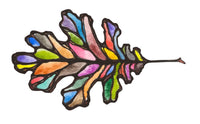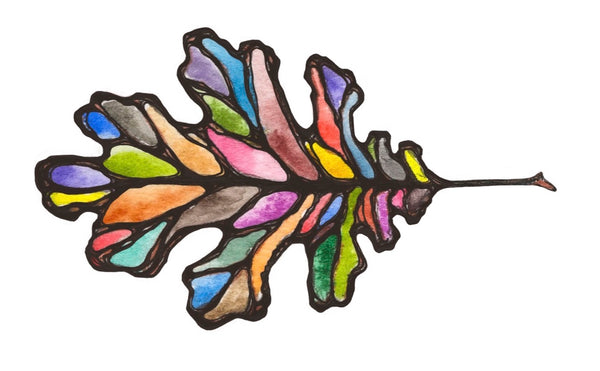Watercolor & White: Why They Belong Together
Rules are both a blessing and a curse. Indeed, they are not "meant to be broken" as the intellectually lazy would have you believe, but they can also create shockingly unnecessary barriers and limitations that inhibit progress and creativity when they are accepted and followed without question, deeper understanding, or critical thought.
In the Arts, it is a healthy approach to see rules more as guidelines - learn them, understand them, and then make an educated decision about what you are going to do with them, now that knowledge of them is a part of your repertoire. In essence, you need to own them.
Painting after detail of an Alexander Marshall plate of Tulipa gesneriana
There have been so many innovations in the history of Art in regards to materials and techniques. There have been discoveries about what pigments are lightfast or react adversely to one another, discoveries in anatomy so that we finally have an understanding of the skeletal and muscular systems and how they influence form and movement. There are the discoveries that revealed how to create realistic perspective, and discoveries in science that unveiled the inter-workings of reflection and refraction of light.
So much has been discovered. As artists in the modern era, we are able to stand on the shoulders of giants standing on the shoulders of the giants that came before them. It is unnecessary to start from scratch in your creative pursuits. There is a distinction between a formal arts education, a self-taught education in the arts, and plowing into things head-first without research or forethought. But I am discussing navigating the many rules you will encounter throughout your artistic journey. There are purists that cling to hard-and-fast rules, and they have their reasons, and there are rule-breakers that make groundbreaking innovations and occasionally get sued.
What I'm bringing up today is fairly benign: the use of the color White in watercolor painting. If you have taken watercolor classes or done much reading on the subject, there is likely a little area of your color palette that might as well have little 'no trespassing' signs on it or be marked off with red tape. If you have a self-assembled set, there is probably a color category or two that simply doesn't exist in your paint box.
For me, the off-limits parts of my first paint set were the White, Black, and Brown. I have it still, and every color except those was used down to the nubby ends, while those colors remain pristine, if a little dusty. Watercolor teachers often suggest you avoid (some, like mine, forbid it) using these colors - and for good reason.

The idea in traditional watercolor is:
-You don't need White because watercolor is a transparent medium and your paper is white. All you need to do is plan ahead, mask if needed, and dilute your colors as necessary. The color white is often mistakenly used by beginners to lighten colors, which it really doesn't do. Instead it makes them cloudy and opaque, and diverts your efforts.
-You don't need Black because very little in nature is actually Black. Black is often mistakenly used by beginners to darken colors, when in reality is just makes them greyer. There are other more effective ways to darken your colors, such as using them at greater intensity (or concentration) and/or mixing them with other colors that have a wider value range.
-You don't need Brown because you can easily mix it with the colors you already have, and it will be a more accurate match that way. Orange is easily substituted and altered through simple mixing.
These are all sound, useful teachings, and I'm very glad that I learned them. They forced me to be creative and think beyond what I already thought I knew. It forced me into a truer color reality - to really look at colors when observing and try to accurately represent them in my painting. Many beginners want to make grey or black shadows. Most shadows have to do with the type of light present and what kind of spectrum is being reflected by the atmosphere and objects present. Shadows are blue, violet, brown, pink, and every other kind of color.
Precisely here is where rules become double-edged: The limitations they impose can force you to seek and find new solutions. They cause you to grow, learn, adapt. But they can also put you in a box, and transition from limitations that challenge you into boundaries that confine you.
I realized, after years of practicing that learned approach to color, just how deeply ingrained it had become. While browsing the racks of watercolors at the local art store, I would marvel at the number of Browns, Blacks, and Whites, and wonder why these companies even bothered making them.
Many years later again from that point, I understand that the color categories, Red, Orange, Yellow etc. etc., are just words - figments of language used to describe a physical or chemical characteristic. There is no such thing as one true Red. The word 'Red' describes a category. Each color that we see is a combination of light and physical chemistry. Light bounces off of an object - some of the light spectrum is absorbed, and some is reflected. The color that we see is the part of the spectrum that is reflected. So the color of an object depends on exactly what it is made of. This is where pigments fit into the discussion. Each pigment is distinct from the next. There may be hundreds of Red pigments, and they will each be a little different from the next. This is especially fascinating when it comes to natural pigments. The only color that will look exactly like Malachite is Malachite - mixtures are always multi-pigment approximations. Further, natural pigments will always carry a unique geology of place expressed in subtle but unique color differences. Green Earth from Verona, Italy will look just a little different from Green Earth found elsewhere in Europe.
After becoming aware of this, how could curiosity about these realms of forbidden pigments not become overwhelming? This a point where I realized that the rules I learned were now holding me back from new growth and exploration. What I had learned from those rules would continue to be a part of my technical tool set, but I wasn't going to let them inhibit my path forward.
In the world of Brown, Black, and White, there are hundreds of colors - with White alone there is Titanium White, Zinc White, Lead White, Eggshell, and Barite, among many others, and each with their own distinct flair.
I'm focusing specifically on the use of White in Watercolor here, and using natural Eggshell and Barite as examples.
Now that you understand some of the reasons to avoid using White, it's time to discuss some of the reasons why using White is awesome:
1) It opens the door to a new realm of color-mixing possibilities and a new dimension to the appearance of your watercolors.
When you mix White with other colors, it creates a pastel version of that color - and FYI, pastels aren't just for Easter and resort-wear. They can be wonderfully useful in desert depictions and cloud-scapes. Another reality about pastel colors is that they are generally opaque. Opacity is the great defining characteristic to many between watercolor and gouache. Often, the main difference is that a whiting agent has been added to gouache to make it opaque. Some pigments are naturally more opaque than others, so white will effect the opacity of colors in varying degrees. Instead of thinking of White as lightening a color, think of it as having a transformative effect on your colors - it will change the opacity and give them a milky or cloudy effect.

2) When painting on tinted papers, White becomes a palette staple.
When you paint on tinted paper, it effects your entire painting and each color that you use. In general, watercolor is a transparent medium. When using a transparent medium over white paper, the white of the paper has an illuminating, brightening effect on the colors. It is best to think of the color of your paper as another color mixing with your paints. Another technical aspect to take into account is the value of your paper (in terms of how light or dark it is). White is at the lightest end of the value scale, while black is the darkest. Many tinted papers fall somewhere in between. Using a tinted paper means that White watercolor paint will play an integral role in your composition (otherwise you will be missing the lightest portion of your value scale). So, instead of worrying about adding in your darks and mid-tones, as you would when painting on white paper, now you need to concern yourself with darks and lights, as your mid-tones are already present as the paper color.

3) The use of White as a primer.
Priming an area of your paper with White has an interesting effect on the colors painted over it, whether a color wash or otherwise. You can either prime an area with White and let it dry, or go straight into it with wet-on-wet techniques. Depending on which White you choose to use, there will be different effects. You can manipulate these by having a thorough knowledge of the characteristics of the colors in your palette. For example, Eggshell has a larger particle size than Barite - this will effect the texture of whatever you paint over it.

4) White can be used to enhance the effects of lifting.
Lifting is basically the equivalent of erasing in watercolor. If anyone tells you that you "can't fix mistakes in watercolor", they are likely unfortunately generalizing a specific challenge they've encountered. Lifting is a lot like it sounds - it refers to lifting color from the page with your brush. Some colors are easier to lift than others - the pigment particle size of the color is usually the determining factor on how cleanly the color will lift. Generally, synthetic pigments have a much smaller particle size than natural pigments, and can therefore have a more staining quality and be more difficult to cleanly lift (because the tiny pigment particles quickly work their way into the fibers of the paper). By going into an area that you have lifted with an application of white, you can maintain a painted layer over the whole paper, or you can tidy up an area that has been stained by the lifted color.

5) Spontaneous details.
Planning ahead is one approach to painting, and flying by the seat of your pants is another, and both are perfectly valid. If you didn't plan ahead for every last white detail, go ahead an add them later! You will want to be careful in your application if you are adding finishing touches. Choose an appropriate brush and a white with the right consistency and opacity.
Your Secret Weapon When Using White: The Atomizer or Pocket Mister
The secret to quickly using your colors at full intensity is to pre-wet them before you begin to paint. This is especially true of colors that are slow to re-wet and Whites. Just spray down your colors with a light mist a few minutes before you dip into them.
Your other secret weapons? Patience and a curious mind. Go ahead and experiment. Don't be afraid to make something ugly - it's worth it because it's always a learning experience. Pull down the red tape around that forbidden area of your color palette. Sink your brush into some new colors and see where it can take your work!


